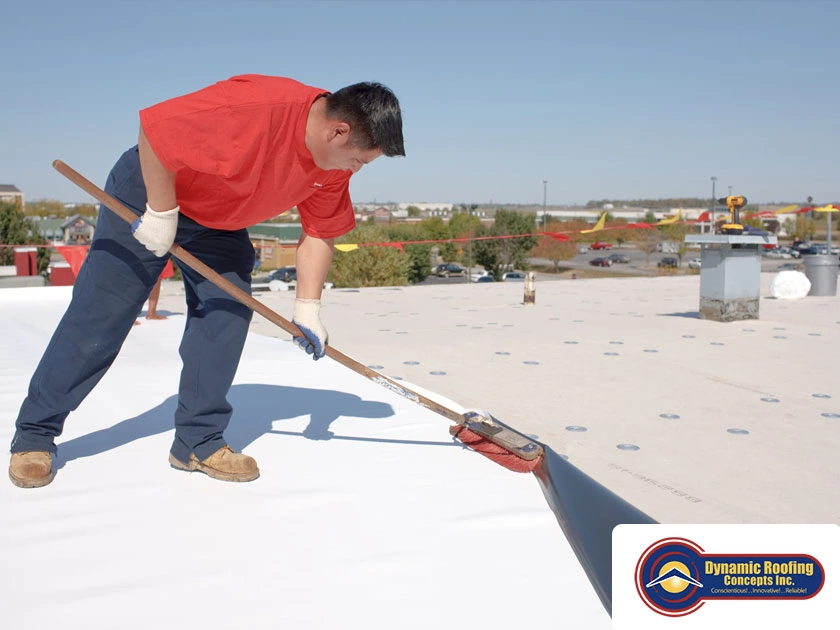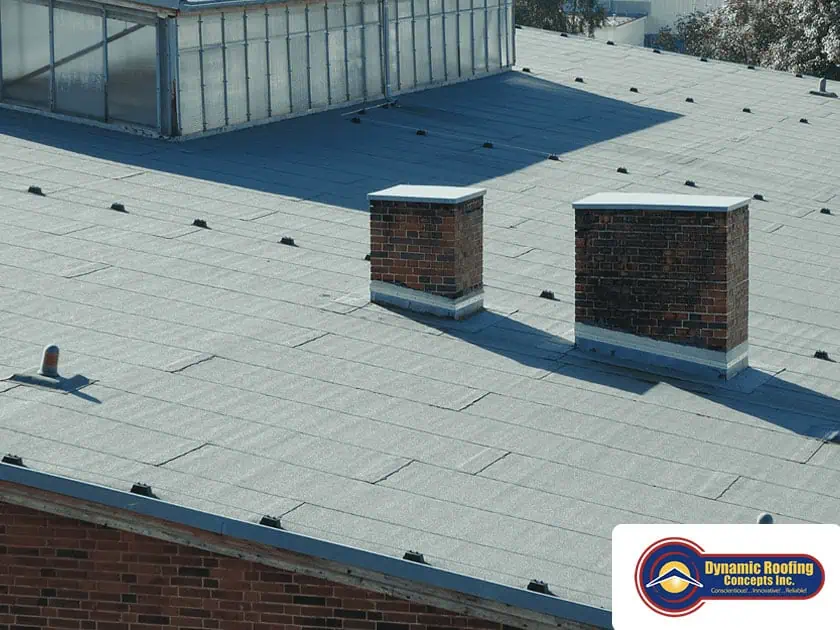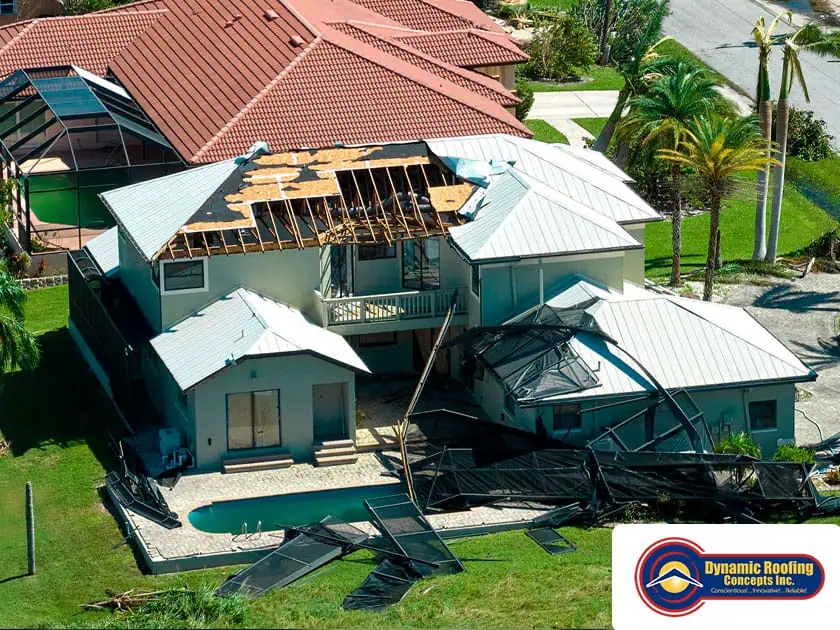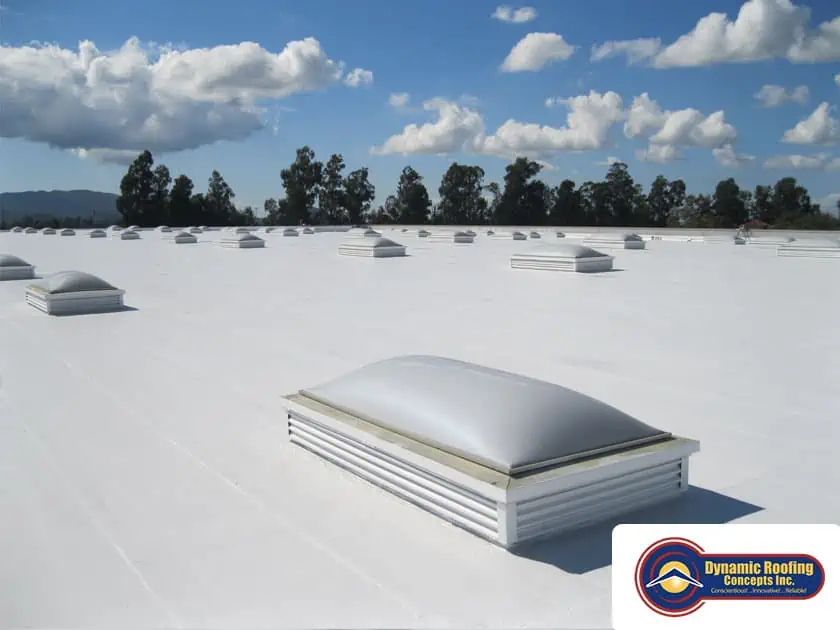

Share On:
In roofing, TPO stands for Thermoplastic Polyolefin — a flexible, energy-efficient, and cost-effective single-ply membrane popular for commercial and residential flat roofs in Brandon, FL. In this guide, we’ll explain what TPO is made of, how it performs, and how it compares to EPDM and PVC roofing systems.
TPO roofing is now one of the most trusted commercial roofing materials for flat or low-slope roofs. It’s also widely used in flat roofing applications thanks to its balance of performance and affordability.
What Is TPO Roofing Made Of?
TPO is a proprietary blend of:
- Polypropylene (adds structure and stability)
- Ethylene-propylene rubber (boosts flexibility and UV durability)
- Fillers such as fiberglass or carbon
This blend supports thermal expansion, water resistance, and easy maintenance — all important in Florida’s fluctuating climate.
Defining TPO Roofing: Thermoplastic Polyolefin Explained
TPO is a single-ply membrane system, installed in one continuous layer. The term “thermoplastic” means it can be heat-welded at the seams for a watertight bond, while “polyolefin” refers to the flexible plastic base material.
TPO membranes are highly resistant to ultraviolet rays, water, and environmental wear — making them a dependable long-term solution for flat roofs in Brandon and beyond.
Advantages of TPO Roofing
- Energy Efficiency: Reflects UV rays, reducing air conditioning costs. Learn more about energy-efficient roofing options here.
- Durability: Resists mold, punctures, heat, and chemical exposure
- Seam Strength: Heat-welded seams provide watertight protection
- Cost-Effective: Offers strong performance at a moderate price point
- Environmentally Friendly: TPO membranes are often recyclable, supporting sustainability efforts
How Long Does a TPO Roof Last?
Most TPO roofing systems last between 20 and 30 years with proper installation and regular maintenance. Several factors impact the lifespan, including:
- Installation quality (especially seam welding and adhesive use)
- Climate conditions (Florida’s heat and UV exposure can accelerate wear without proper protection)
- Ongoing maintenance like inspections and debris removal
Thanks to TPO’s UV resistance, flexibility, and heat-welded seams, it offers strong long-term performance for flat commercial roofs in Brandon. With routine care, some systems may even exceed the 30-year mark.
Disadvantages of TPO Roofing
While TPO roofing is a popular choice for energy efficiency and affordability, there are a few drawbacks to consider:
- Variable Quality: Early TPO products from some manufacturers experienced membrane cracking. Always choose a reputable, certified brand.
- Puncture Risk: Although durable, TPO membranes can be punctured by heavy foot traffic or sharp debris if walkways or protection mats aren’t installed.
- Shorter Track Record: Compared to long-established options like EPDM rubber or polyvinyl chloride (PVC), TPO is relatively new and has less proven long-term performance data.
👉 Despite these limitations, proper installation and routine maintenance by an experienced contractor can help you avoid most issues and ensure your TPO roof delivers reliable protection and longevity.
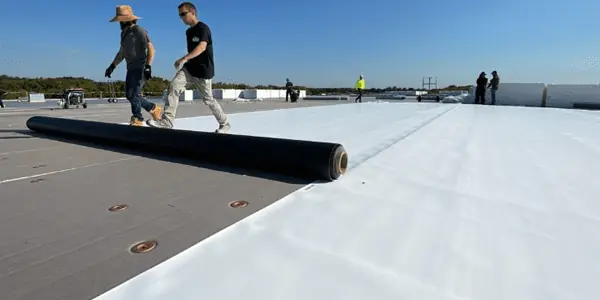
TPO Roofing Installation and Maintenance
Proper installation is critical to maximizing TPO’s benefits. Roofing contractors must carefully prepare the substrate, use the right adhesive or mechanical fastening system, and heat-weld the seams to ensure full waterproofing. Routine commercial roof inspections help catch issues like seam separations or ponding water before they become major problems.
Explore how roof coatings can extend roof life and improve performance.
TPO vs EPDM Roofing: Which Is Better?
Both TPO and EPDM are widely used membrane roofing systems for flat or low-slope commercial buildings — but they differ in key ways that can influence your decision.
Here’s a quick comparison:
| Feature | TPO (Thermoplastic Polyolefin) | EPDM (Ethylene Propylene Diene Monomer) |
| Material Type | Thermoplastic polyolefin membrane | Synthetic rubber (EPDM rubber) |
| Energy Efficiency | High (UV reflective surface) | Lower unless coated white |
| Flexibility | Good | Excellent |
| Lifespan | 20–30 years | 25–30+ years |
| Durability | Strong UV resistance, welded seams | Great weather flexibility and impact resilience |
| Cost | Moderate | Lower upfront cost |
TPO is often preferred in hot, sunny climates like Brandon because of its UV-reflective properties and energy savings. EPDM, on the other hand, offers better cold-weather flexibility and a longer historical track record.
Want a full breakdown of all three major flat roof types? Compare EPDM, TPO, and PVC Roofing options.
TPO vs PVC Roofing: Key Differences
TPO and PVC are both excellent single-ply membrane roofing options, commonly used for flat commercial roofs in Florida. While they share similarities in performance and installation, each material has unique advantages:
- TPO (Thermoplastic Polyolefin) is generally more affordable, highly UV-reflective, and often chosen for energy efficiency in hot climates.
- PVC (Polyvinyl Chloride) provides superior chemical and grease resistance, making it ideal for restaurants, manufacturing facilities, and buildings with rooftop vents or oil exposure.
Choosing between TPO and PVC depends on your building’s specific needs, environmental exposure, and long-term maintenance goals.
Choosing a Roofing Contractor for TPO Installation
When it comes to TPO roofing, choosing the right flat roof contractor is just as important as choosing the right material. A poorly installed membrane can lead to costly leaks, voided warranties, and reduced lifespan. Here’s what to look for:
Commercial Roofing Contractor Expertise
TPO is widely used in commercial buildings with flat or low-slope roofs, where proper installation techniques make all the difference. A qualified contractor understands how TPO interacts with roof decks, drainage systems, and building codes specific to commercial properties.
Credentials and Manufacturer Certifications
Look for a roofer who is:
- Licensed and insured in Florida
- Experienced with TPO membranes and heat-welded seam installation
- Certified by leading manufacturers like GAF, which may qualify you for extended warranties
Dynamic Roofing Concepts Inc. is proud to be GAF Master Elite® certified, a designation earned by fewer than 3% of roofing contractors nationwide. This certification ensures strict installation standards and gives you access to enhanced warranty coverage.
These credentials aren’t just formalities — they ensure your contractor can install the system to spec and protect your investment long term. Choosing a certified, experienced roofing team gives you the confidence that your TPO roof will be installed correctly, perform efficiently, and hold up under Brandon’s extreme weather.
The Future of TPO Roofing
As the demand for energy-efficient, durable, and environmentally responsible roofing grows, TPO continues to evolve with even better UV resistance, improved seam strength, and enhanced recyclability. Property owners choosing TPO today are investing in a future-proof solution.
Ready to explore whether TPO roofing is right for your commercial or residential flat roof in Brandon?
📞 Call Dynamic Roofing Concepts Inc. today at (813) 657-7663 or Request a Free TPO Roofing Estimate and protect your property with industry-leading materials and expert installation.

